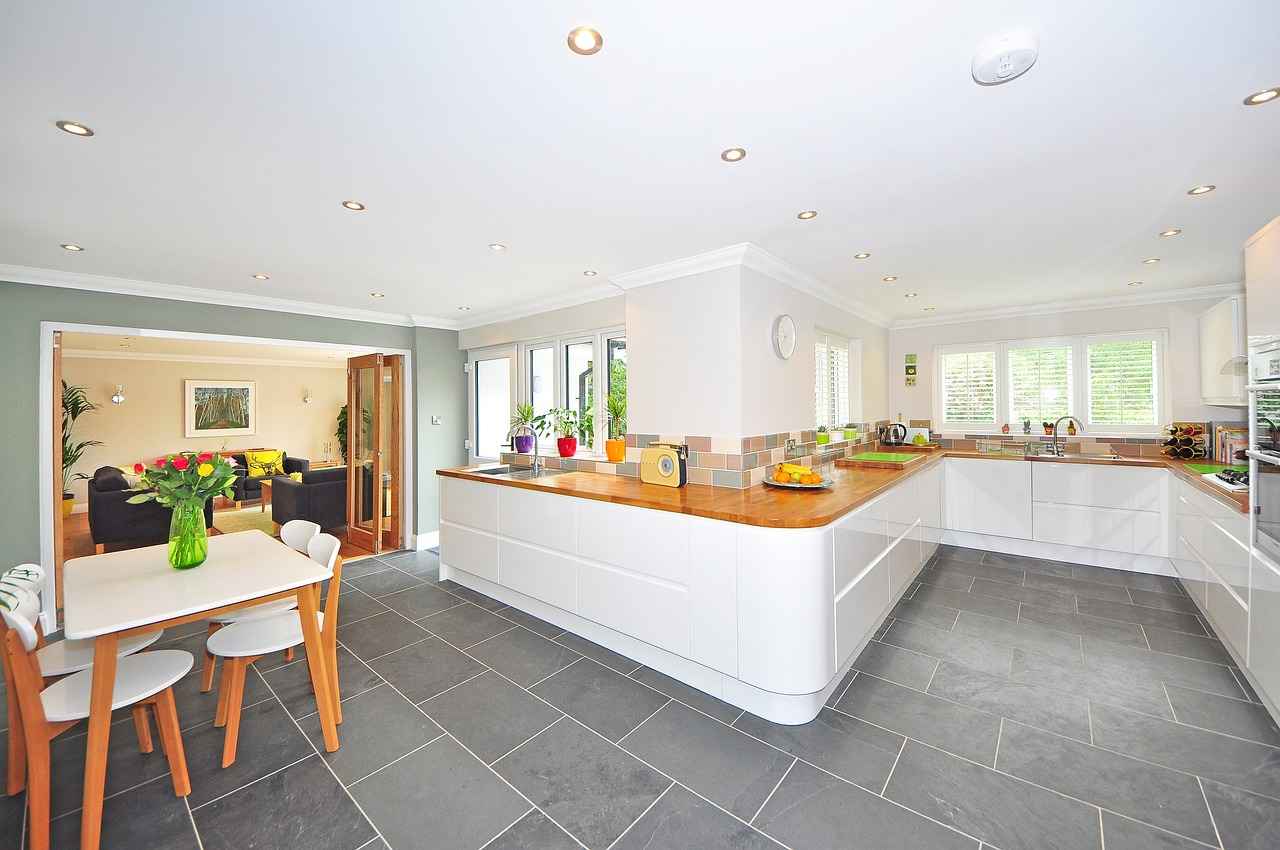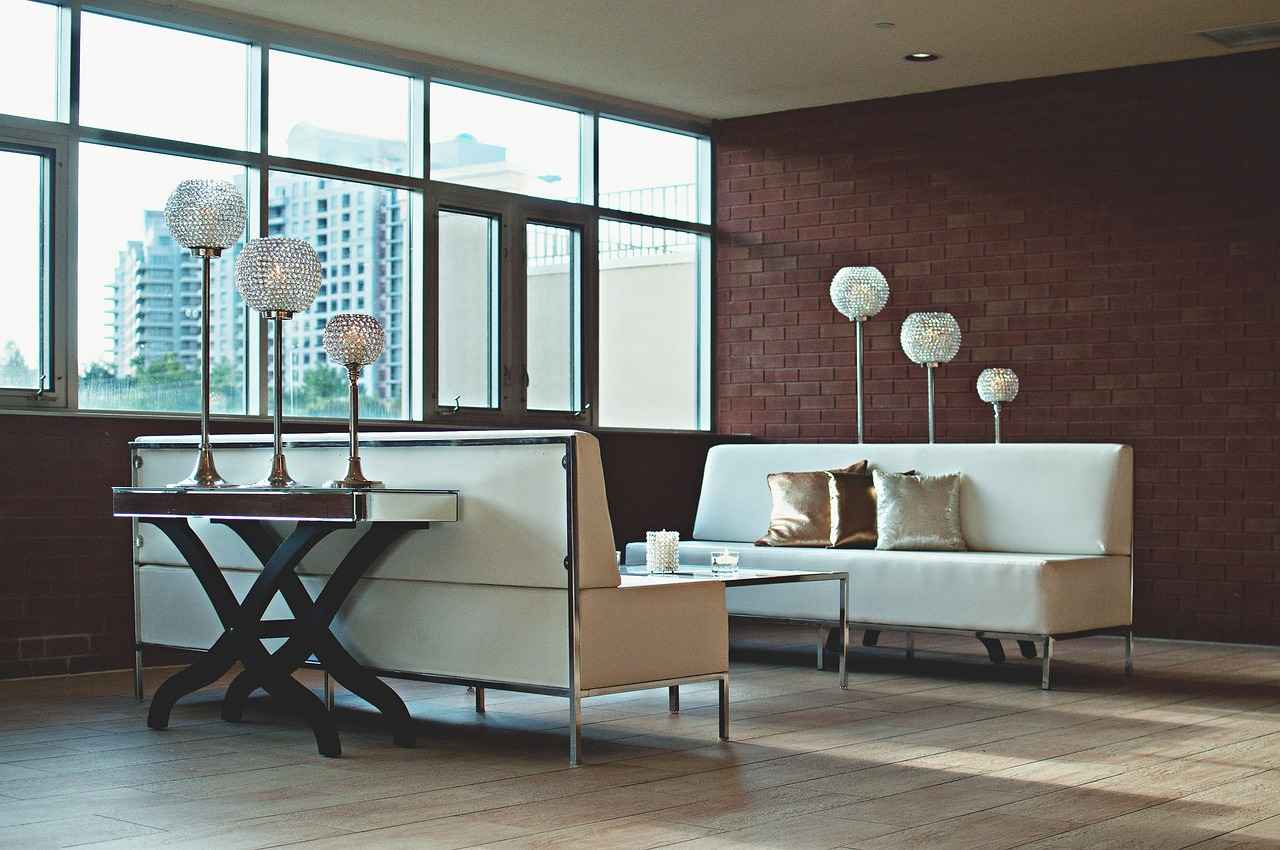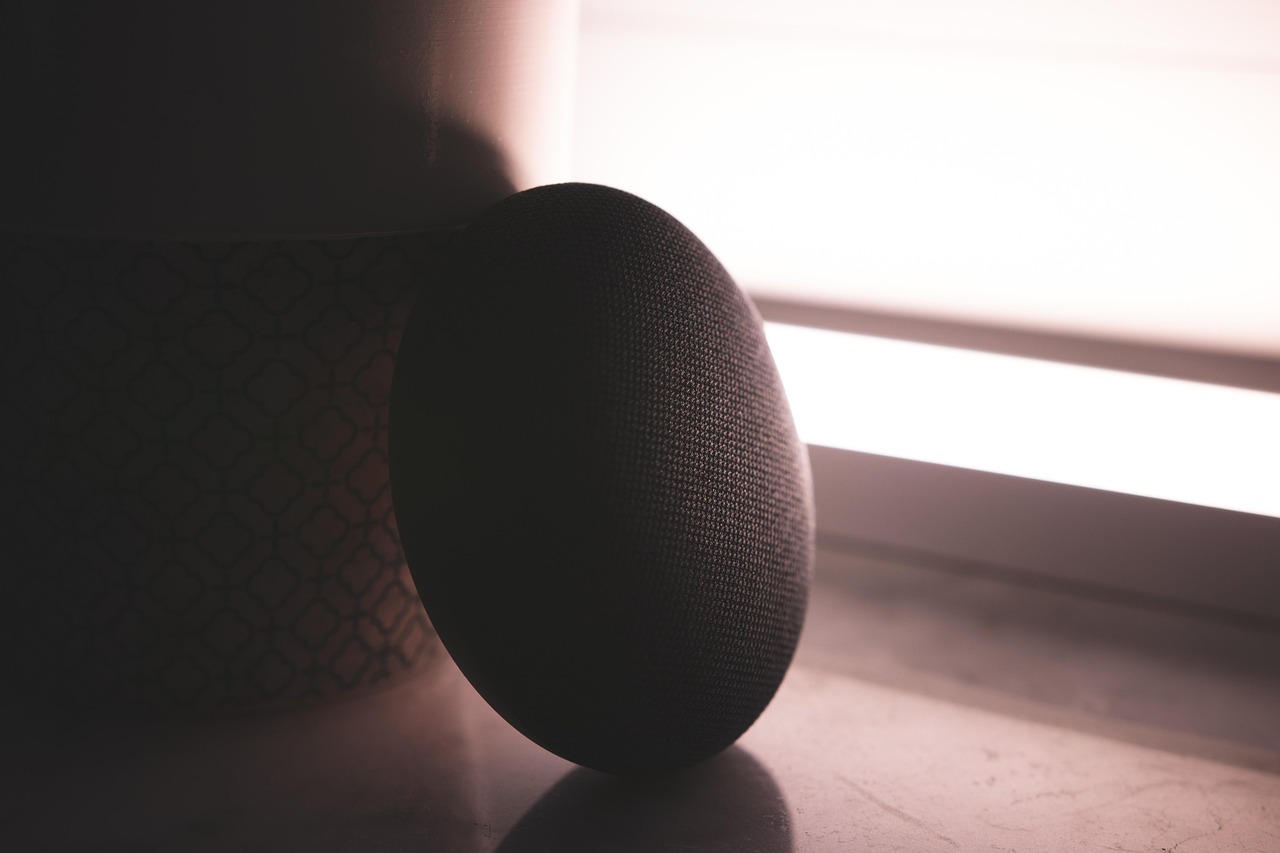As technology continues to evolve, smart home devices are becoming essential for enhancing the living room experience. These innovative gadgets not only provide convenience but also improve entertainment options and promote energy efficiency. Let’s explore how these devices can transform your everyday life.
- Smart Speakers
Devices like Amazon Echo and Google Nest Hub are at the forefront of smart home technology. They allow you to control music, manage smart devices, and access information using just your voice, all while creating a cozy atmosphere in your living room.
- Smart TVs
Modern smart TVs integrate streaming services and voice control, making them a central entertainment hub. With access to countless apps, they provide a seamless viewing experience.
- Features: High-definition displays, built-in streaming apps, and voice assistants.
- Popular Brands: Samsung, LG, and Sony offer a range of options tailored to different preferences.
- Choosing the Right TV: Consider factors like screen size and resolution to meet your entertainment needs.
- Smart Lighting
Smart lighting solutions, such as Philips Hue and LIFX, let you control brightness and color through your smartphone or voice commands. This feature allows you to create the perfect ambiance for any occasion.
- Benefits: Enhances aesthetics and promotes energy efficiency.
- Setup: Typically involves installing smart bulbs and a control app.
- Smart Thermostats
Devices like Nest and Ecobee learn your preferences and optimize your living room’s climate, enhancing comfort and saving energy.
- Energy Efficiency: Analyzes usage patterns to help reduce unnecessary heating or cooling.
- Integration: Works seamlessly with other smart devices for a cohesive experience.
- Smart Plugs
Smart plugs allow you to convert any standard appliance into a smart device, enabling remote control and automation.
- Practical Uses: Schedule devices to turn on/off, monitor energy usage, and control via apps.
- Choosing the Right Plug: Look for compatibility with your home assistant and energy monitoring features.
In conclusion, integrating these smart home devices into your living room can significantly enhance your lifestyle, providing convenience, entertainment, and energy savings. Embrace the future of living with these innovative solutions!

1. Smart Speakers
Smart speakers have revolutionized the way we interact with technology in our homes. Devices like the Amazon Echo and Google Nest Hub are not just tools for playing music; they have become central hubs for managing our smart homes. With voice control capabilities, these speakers allow users to easily access a wide range of functionalities, enhancing both convenience and ambiance in the living room.
One of the primary advantages of smart speakers is their ability to stream music effortlessly. Users can simply ask their devices to play their favorite songs, playlists, or radio stations, creating the perfect atmosphere for any gathering or relaxation time. Moreover, these speakers support various music streaming services, ensuring that you have access to millions of tracks at your fingertips.
In addition to music, smart speakers serve as smart home controllers. By integrating with other smart devices such as lights, thermostats, and security systems, they allow for seamless management of your home environment. For instance, you can dim the lights, adjust the thermostat, or lock the doors, all through simple voice commands. This not only adds convenience but also enhances security and energy efficiency.
Furthermore, smart speakers provide instant access to information. Whether you need to check the weather, get the latest news updates, or set reminders, these devices can deliver answers and perform tasks quickly. This feature is particularly useful for busy individuals who rely on technology to stay organized and informed.
Finally, the design of smart speakers often complements modern home decor, making them an attractive addition to any living room. With various styles and finishes available, they can easily blend in with your decor while serving multiple functions.
In conclusion, smart speakers like the Amazon Echo and Google Nest Hub are multifunctional devices that enhance the living room experience. They provide entertainment, convenience, and control, making them essential tools for modern households.

2. Smart TVs
Smart TVs have revolutionized the way we consume entertainment in our living rooms. By integrating various features such as streaming services, voice control, and compatibility with smart home devices, they have become a vital component of modern households. With a plethora of applications and services at our fingertips, the entertainment experience has never been more seamless.
One of the standout features of smart TVs is their ability to connect to popular streaming platforms like Netflix, Hulu, and Amazon Prime Video. This integration allows users to access a vast library of content without the need for additional devices. Moreover, smart TVs often come equipped with high-definition displays that enhance picture quality, making every viewing experience more enjoyable.
- Voice Control: Many smart TVs include built-in voice assistants like Amazon Alexa or Google Assistant, allowing users to control their TV with simple voice commands. This feature not only adds convenience but also enhances accessibility for those with mobility challenges.
- Smart Home Compatibility: Smart TVs can serve as a hub for your smart home ecosystem. They can interact with devices such as smart lights, thermostats, and security cameras, providing a unified control center for your home.
- Regular Updates: Leading brands frequently release software updates that enhance functionality and security, ensuring that your smart TV remains up-to-date with the latest features and improvements.
When choosing the right smart TV, consider factors such as screen size, resolution (4K or 8K), and compatibility with other devices you own. These elements play a crucial role in ensuring that your TV meets your entertainment needs and fits seamlessly into your living space.
In conclusion, smart TVs are not just a trend; they are a fundamental part of the modern living room. Their ability to integrate various services and features makes them indispensable for anyone looking to enhance their entertainment experience at home.
Features of Smart TVs
Smart TVs have revolutionized the way we consume media, providing a comprehensive platform that integrates entertainment, connectivity, and convenience. Here are some of the key features that make Smart TVs an essential addition to any living room:
- High-Definition Displays: Most Smart TVs come equipped with 4K Ultra HD or even 8K resolution, offering stunning visuals that enhance your viewing experience. This clarity allows you to see every detail in your favorite movies and shows.
- Built-in Streaming Apps: Smart TVs include popular streaming services like Netflix, Amazon Prime Video, and Disney+ pre-installed, giving you instant access to a vast library of content without the need for additional devices.
- Voice Assistants: With integrated voice control features, Smart TVs allow you to search for shows, control playback, and even manage other smart devices in your home simply by using your voice. This hands-free operation adds a layer of convenience.
- Smart Home Integration: Many Smart TVs can connect with other smart home devices, enabling seamless control of your home environment. You can adjust lighting, temperature, and security settings right from your TV screen.
- Screen Mirroring: This feature allows you to share content from your smartphone or tablet directly onto the TV, making it easy to display photos, videos, or presentations during gatherings.
In conclusion, Smart TVs are more than just a television; they are a central hub for entertainment and smart home management. With their advanced features, they cater to a wide range of user preferences, making them a worthwhile investment for any modern living room.
Popular Brands
In the ever-evolving world of smart TVs, leading brands like Samsung, LG, and Sony stand out for their innovative technology and diverse offerings. Each brand provides a range of models that cater to various user preferences, ensuring that there is something for everyone, regardless of budget or specific needs.
Samsung is renowned for its cutting-edge QLED technology, which delivers stunning picture quality with vibrant colors and deep blacks. Their smart TVs often come equipped with features like Samsung Smart Hub, allowing users to easily access streaming services and manage connected devices. Additionally, many models support voice assistants, enhancing user convenience.
LG, on the other hand, is famous for its OLED displays, which offer superior contrast and viewing angles. LG’s webOS platform provides a user-friendly interface, making it easy to navigate through various apps and settings. The brand also emphasizes smart home integration, allowing LG TVs to communicate seamlessly with other smart devices in your home.
Sony focuses on delivering exceptional audio-visual experiences through its proprietary technologies like TRILUMINOS and Acoustic Surface Audio. Sony smart TVs are designed to provide immersive sound and picture quality, making them ideal for movie enthusiasts. Their integration with Google Assistant also allows for hands-free control and smart home management.
When choosing a smart TV, it’s essential to consider factors such as display technology, operating system, and additional features. Each brand has its strengths, and understanding these can help you make an informed decision that best fits your entertainment needs.
Choosing the Right Smart TV
is essential for a satisfying entertainment experience at home. With the rapid advancement of technology, smart TVs have become a staple in modern living rooms. However, selecting the perfect model requires careful consideration of several key factors.
- Screen Size: One of the first things to decide is the screen size. Depending on your living room’s dimensions and viewing distance, a larger screen may enhance your viewing experience. Typically, a size between 55 to 75 inches is ideal for most living rooms.
- Resolution: The resolution of the TV is another critical factor. Options like 4K Ultra HD provide stunning clarity and detail, making your favorite shows and movies more immersive. For those looking for the best picture quality, consider models that support HDR (High Dynamic Range) for richer colors and contrast.
- Smart Features: Not all smart TVs are created equal. Look for models that offer a wide range of streaming services and user-friendly interfaces. Compatibility with voice assistants like Amazon Alexa or Google Assistant can also enhance your experience.
- Connectivity: Ensure that the smart TV has multiple HDMI ports and USB connections for all your devices. This is crucial for connecting gaming consoles, sound systems, and other peripherals.
- Brand Reputation: Consider brands known for reliability and customer support. Leading manufacturers like Samsung, LG, and Sony often provide better warranty options and after-sales service.
In conclusion, choosing the right smart TV involves evaluating your specific needs and preferences. By considering screen size, resolution, smart features, connectivity options, and brand reputation, you can find a smart TV that will significantly enhance your entertainment experience.
Smart TV Accessories
play a crucial role in enhancing your overall viewing experience. From soundbars to universal remotes, these accessories can significantly improve audio quality and simplify the management of your devices in the living room. Below, we delve into some essential accessories that every smart TV owner should consider.
- Soundbars: A soundbar can dramatically elevate your audio experience. Unlike built-in TV speakers, soundbars provide richer, more immersive sound. They often come with various sound modes, allowing you to customize audio for movies, music, or gaming.
- Streaming Devices: While many smart TVs come with built-in streaming capabilities, dedicated streaming devices like Roku, Amazon Fire Stick, or Apple TV can offer a more extensive selection of apps and smoother performance. These devices keep your smart TV updated with the latest streaming services.
- Universal Remotes: Managing multiple remotes can be a hassle. Universal remotes simplify this by allowing you to control your TV, sound system, and other devices with one remote. Many models also offer programmable buttons and voice control features for added convenience.
- HDMI Switches: If you have multiple devices connected to your TV, an HDMI switch can help you manage them efficiently. This accessory allows you to switch between devices without constantly unplugging and replugging cables.
- Wall Mounts: For a sleek and modern look, consider wall mounting your smart TV. Wall mounts save space and can enhance your viewing angle, making your living room feel more open and inviting.
By investing in these , you can create a more enjoyable and convenient entertainment environment. Whether you’re watching movies, playing games, or streaming your favorite shows, the right accessories can make all the difference in your living room experience.

3. Smart Lighting
Smart Lighting Solutions have revolutionized the way we experience and interact with our living spaces. Devices like Philips Hue and LIFX are at the forefront of this innovation, enabling users to control brightness and color through their smartphones or voice commands. This capability allows for the creation of customizable atmospheres that can significantly enhance the ambiance of your living room.
- Energy Efficiency: Smart lighting systems can help reduce electricity consumption by allowing you to schedule lights to turn off when not needed.
- Customization: With the ability to adjust colors and brightness, you can create different moods for various occasions, from cozy movie nights to vibrant social gatherings.
- Convenience: Control your lights from anywhere using your smartphone or with simple voice commands through smart assistants like Alexa or Google Assistant.
Setting up smart lighting is a straightforward process. Most systems require the installation of smart bulbs and a compatible hub or app. Here’s a simple guide:
1. Choose your smart bulbs (e.g., Philips Hue or LIFX).2. Install the bulbs in your existing fixtures.3. Download the corresponding app on your smartphone.4. Follow the app instructions to connect your bulbs to your Wi-Fi network.5. Start customizing your lighting settings!
| Brand | Key Features |
|---|---|
| Philips Hue | Wide range of colors, integration with smart home systems, and energy-efficient. |
| LIFX | No hub required, vibrant colors, and customizable lighting effects. |
In conclusion, adopting smart lighting solutions in your living room not only enhances the aesthetic appeal but also promotes energy efficiency and convenience. By integrating these innovative devices, you can transform your living space into a personalized haven that caters to your lifestyle and preferences.
Benefits of Smart Lighting
Smart lighting systems have revolutionized how we illuminate our living spaces, particularly in the living room. These innovative solutions not only enhance the overall aesthetic appeal but also offer a multitude of practical benefits that cater to modern lifestyles.
- Energy Efficiency: One of the most significant advantages of smart lighting is its ability to promote energy efficiency. By allowing users to control brightness and color temperature, smart lights can significantly reduce electricity consumption, leading to lower energy bills.
- Personalized Experiences: With smart lighting, you can easily create customized lighting scenarios that match your mood or activity. Whether it’s a cozy movie night or an energetic gathering, the ability to change the ambiance with a simple command enhances your living experience.
- Convenience: Smart lighting solutions can be controlled via smartphones or voice commands, providing unparalleled convenience. Imagine adjusting the lights without leaving your couch or setting schedules to have your lights turn on and off automatically.
- Integration with Smart Home Systems: Smart lighting can seamlessly integrate with other smart home devices, such as security systems and thermostats. This integration allows for coordinated control, enhancing both security and comfort in your home.
- Enhanced Security: Smart lighting can be programmed to simulate your presence at home by automatically turning on and off at certain times. This feature is particularly useful for deterring potential intruders when you are away.
In conclusion, investing in smart lighting not only beautifies your living room but also contributes to a more energy-efficient and convenient lifestyle. With the ability to personalize your lighting experience and enhance home security, smart lighting is an essential addition to any modern home.
Setting Up Smart Lighting
is an essential step in creating a modern, efficient living space. With the rise of smart home technology, many homeowners are eager to embrace these innovations to enhance their daily lives. Smart lighting systems, such as those offered by Philips Hue and LIFX, provide not only convenience but also the ability to customize the atmosphere of your home.
- Easy Installation: Setting up smart lighting is typically a straightforward process. Most systems require the installation of smart bulbs that easily fit into existing light fixtures.
- Control Options: Once the bulbs are in place, users can control them via a dedicated app or a smart home hub. This flexibility allows for easy adjustments from anywhere in your home.
- Voice Activation: Many smart lighting systems are compatible with voice assistants like Amazon Alexa and Google Assistant, enabling hands-free control.
Moreover, smart lighting can significantly enhance your living environment. Here are some key benefits:
- Energy Efficiency: Smart bulbs consume less energy than traditional incandescent bulbs, leading to lower electricity bills.
- Customizable Ambiance: Users can adjust brightness and color to suit different moods or activities, whether it’s a cozy movie night or an energetic gathering.
- Automation: Smart lighting can be programmed to turn on and off at specific times, adding an extra layer of security and convenience.
In conclusion, is not only accessible for tech-savvy individuals but also for anyone looking to modernize their home. With user-friendly installation and control options, these systems offer a blend of practicality and style that can transform any living space.

4. Smart Thermostats
Smart thermostats, such as Nest and Ecobee, have revolutionized the way we manage our home climate. These innovative devices not only enhance comfort but also promote energy efficiency, making them essential for modern living spaces. By learning your daily routines and preferences, smart thermostats can automatically adjust the temperature, ensuring that your living room is always at the perfect setting.
How Do Smart Thermostats Work?
Smart thermostats utilize advanced algorithms and sensors to monitor your home environment. They analyze data such as:
- Time of day
- Current temperature
- Humidity levels
- Occupancy patterns
By understanding these variables, they can make real-time adjustments, ensuring optimal comfort while minimizing energy consumption.
Energy Efficiency Benefits
One of the standout features of smart thermostats is their ability to significantly reduce energy costs. They can provide insights into your heating and cooling habits, allowing you to:
- Identify energy waste
- Set schedules for when you’re home or away
- Receive alerts for unusual energy usage
This capability not only helps in lowering utility bills but also contributes to a more sustainable lifestyle.
Integration with Smart Home Ecosystems
Smart thermostats can seamlessly integrate with other smart home devices, such as smart speakers and lighting systems. This interoperability allows for coordinated control, where you can adjust the temperature with your voice or set the thermostat to respond to your lighting preferences. Such integrations create a comprehensive smart home experience that adapts to your lifestyle.
Conclusion
In summary, smart thermostats like Nest and Ecobee are more than just temperature controllers; they are intelligent systems designed to enhance your living environment. With their energy-saving capabilities and integration with other smart home devices, they represent a significant step towards a more comfortable and efficient home.
Energy Efficiency
is a crucial consideration for homeowners looking to reduce their environmental impact and save on utility bills. Smart thermostats, such as Nest and Ecobee, play a significant role in enhancing energy efficiency within the home.
These devices are designed to learn your daily routines and adjust heating and cooling settings accordingly. By analyzing usage patterns, smart thermostats can identify when you are home or away, allowing them to optimize energy consumption. For instance, they can lower the temperature when you leave for work and raise it just before you return, ensuring comfort while minimizing unnecessary energy use.
- Adaptive Learning: Smart thermostats utilize machine learning algorithms to adapt to your preferences over time. This means they can automatically adjust settings based on your habits, further enhancing energy savings.
- Remote Access: Many smart thermostats come with mobile applications, allowing you to monitor and adjust your home’s temperature from anywhere. This feature is particularly useful for making quick adjustments if your plans change.
- Energy Reports: These devices often provide detailed energy reports, giving homeowners insights into their heating and cooling patterns. This information can help identify areas for improvement and encourage more energy-conscious behaviors.
Moreover, smart thermostats can integrate seamlessly with other smart home devices, creating a cohesive system that maximizes energy efficiency. For example, they can work in conjunction with smart blinds that close during the hottest parts of the day, further reducing the need for air conditioning.
In conclusion, investing in a smart thermostat not only enhances comfort but also significantly contributes to energy efficiency in your home. By leveraging technology to analyze usage patterns and provide actionable insights, these devices empower homeowners to make informed decisions that can lead to substantial energy savings.
Integration with Other Devices
In today’s ever-evolving technological landscape, the ability of smart devices to work together is paramount for creating a seamless living experience. Smart thermostats like Nest and Ecobee exemplify this integration, allowing for a more coordinated home environment that adapts to your unique lifestyle.
When integrated with other smart devices, these thermostats can enhance your home’s functionality. For instance, by connecting to smart speakers, you can control your thermostat with simple voice commands. Imagine adjusting your home’s temperature without lifting a finger, simply by saying, “Hey Google, set the living room temperature to 72 degrees.” This level of convenience not only improves comfort but also promotes energy efficiency.
Furthermore, when linked to smart lighting systems, your thermostat can adjust heating or cooling based on the lighting in your home. If you dim the lights for movie night, the thermostat can respond by lowering the temperature slightly, creating a cozy atmosphere without wasting energy. This kind of smart automation ensures that your home is not only comfortable but also energy-efficient.
Additionally, integrating your thermostat with smart security systems can enhance safety. For example, if a security camera detects motion while you are away, the thermostat can adjust to an energy-saving mode, ensuring your home remains efficient even when unoccupied. This integration can also send alerts to your smartphone, keeping you informed about your home’s conditions.
In conclusion, the integration of smart thermostats with other devices is a game-changer for modern living. By creating a network of interconnected devices, homeowners can enjoy a comprehensive smart home experience that not only adapts to their lifestyle but also enhances comfort, safety, and energy efficiency.

5. Smart Plugs
Smart plugs are an innovative and affordable solution for transforming your everyday appliances into smart devices. By simply plugging them into your existing outlets, you can gain remote control over lamps, fans, and other electronics in your living room.
Why Choose Smart Plugs?
With the rise of smart home technology, smart plugs stand out as one of the most versatile devices available. They allow you to:
- Control Devices Remotely: Using a smartphone app, you can turn devices on or off from anywhere, making it easy to manage your home.
- Schedule Operations: Set specific times for your appliances to operate, ensuring that lights turn on at sunset or that your coffee maker brews at the same time every morning.
- Monitor Energy Usage: Many smart plugs provide insights into energy consumption, helping you identify devices that use excessive power and allowing for better energy management.
How to Set Up Smart Plugs
Setting up smart plugs is a straightforward process:
1. Plug the smart plug into an outlet.2. Connect the appliance you want to control.3. Download the corresponding app on your smartphone.4. Follow the app instructions to connect the smart plug to your Wi-Fi network.5. Start controlling your devices remotely!
Choosing the Right Smart Plug
When selecting a smart plug, consider the following:
- Compatibility: Ensure the smart plug works with your home assistant, such as Amazon Alexa or Google Assistant.
- Energy Monitoring: Look for features that allow you to track energy usage.
- Maximum Load: Check the wattage capacity to ensure it can handle your devices.
In conclusion, smart plugs are an essential addition to any smart home setup. They provide not only convenience and automation but also contribute to energy efficiency, making them a wise investment for modern living.
Practical Uses of Smart Plugs
Smart plugs are revolutionizing the way we manage our home appliances, offering both convenience and energy efficiency. With their ability to transform ordinary devices into smart ones, they provide a seamless integration into your smart home ecosystem.
Smart plugs are incredibly versatile, allowing you to control various devices remotely. Here are some practical applications:
- Scheduling: You can easily set schedules for devices to turn on and off at specific times. For instance, program your coffee maker to start brewing in the morning, ensuring a fresh cup awaits you.
- Remote Control: Using a smartphone app, you can control your devices from anywhere. Whether you’re at work or on vacation, you can turn off that lamp you forgot about or turn on the fan before you arrive home.
- Energy Monitoring: Many smart plugs come equipped with energy monitoring features. This allows you to track the energy consumption of connected devices, helping you identify energy hogs and reduce your electricity bills.
- Voice Control: If you have a smart home assistant, you can use voice commands to control your devices. Just say, “Turn on the living room lamp,” and enjoy hands-free convenience.
- Group Control: Smart plugs can be grouped with other devices, enabling you to create scenes or routines. For example, you can set up a “Movie Night” scene that dims the lights and turns on the TV and sound system with a single command.
When selecting a smart plug, consider factors such as:
- Compatibility: Ensure the smart plug works with your existing home assistant (like Alexa or Google Assistant).
- Energy Monitoring: Look for models that provide detailed energy usage statistics.
- Load Capacity: Check the maximum load the plug can handle to ensure it can support your devices safely.
In conclusion, smart plugs are a practical addition to any smart home setup. They not only enhance convenience but also play a significant role in energy management, making them a worthwhile investment for modern living.
Choosing the Right Smart Plug
When it comes to enhancing your home automation experience, smart plugs play a crucial role. They are not just simple devices; they can significantly improve your daily routines and energy management. Here are some essential factors to consider when making your selection:
- Compatibility with Home Assistants: Ensure that the smart plug you choose is compatible with your existing home assistant, such as Amazon Alexa, Google Assistant, or Apple HomeKit. This compatibility allows for seamless integration and voice control, enhancing your overall smart home experience.
- Energy Monitoring Features: Look for smart plugs that offer energy monitoring capabilities. These features enable you to track the energy consumption of connected devices, helping you identify which appliances consume the most power. By understanding your usage patterns, you can make informed decisions to reduce energy wastage and lower your electricity bills.
- Maximum Load Capacity: It’s crucial to check the maximum load capacity of the smart plug. This specification indicates the amount of power the plug can handle safely. Choosing a plug with an adequate load capacity ensures that it can support your devices without risk of overheating or damage.
- Remote Control and Scheduling: A good smart plug should allow you to control your devices remotely via a smartphone app. Additionally, look for scheduling features that let you set timers for when devices should turn on or off, adding convenience to your daily routine.
- Design and Size: Consider the design and size of the smart plug, especially if you plan to use multiple plugs in close proximity. Some plugs may block adjacent outlets, so it’s essential to choose a design that fits your needs without compromising other outlets.
In summary, selecting the right smart plug involves evaluating compatibility, energy monitoring, load capacity, remote control features, and design. By considering these factors, you can enhance your home automation setup and enjoy a more efficient living environment.
Frequently Asked Questions
- What are smart home devices?
Smart home devices are gadgets that connect to the internet, allowing you to control them remotely through your smartphone or voice commands. They enhance convenience, security, and energy efficiency in your home.
- How do smart speakers work?
Smart speakers use voice recognition technology to respond to your commands. You can ask them to play music, control other smart devices, or provide information, making them versatile companions in your living room.
- Can I use a smart TV without a smart home setup?
Absolutely! A smart TV can function independently, allowing you to stream content and use apps without needing other smart devices. However, integrating it with a smart home setup can enhance your overall experience.
- Are smart lighting systems energy-efficient?
Yes! Smart lighting systems can help reduce energy consumption by allowing you to control brightness and set schedules, ensuring lights are only on when needed, which can lower your electricity bills.
- How do smart thermostats save energy?
Smart thermostats learn your heating and cooling preferences over time and adjust the temperature automatically. They optimize energy usage by analyzing patterns, ensuring comfort while minimizing waste.
- What can I control with smart plugs?
Smart plugs let you control any device plugged into them, such as lamps, fans, or coffee makers. You can schedule them to turn on/off or control them remotely, adding convenience to your daily routine.



